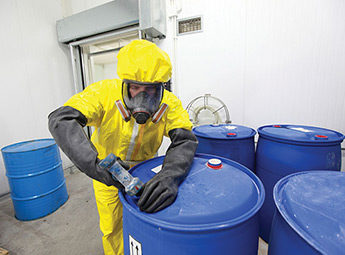The future of PSM
For the first time in 20 years, OSHA is taking a serious look at its Process Safety Management Standard

Enforcement
One suggestion for reducing the number of unintended hazardous chemical releases and explosions focuses not on increasing the scope of the current standard, but rather on increasing OSHA enforcement activities.
“It may be OSHA needs to first put resources into having greater frequency of inspections before they start looking at improving the regulation,” Berger said.
Although incidents have occurred at facilities owned by large companies, those companies have the resources to invest in safety. However, Berger said, many people are worried about the companies that do not have the resources to make basic improvements.
OSHA needs to consider how changing the standard will affect these companies, Arendt said. He said larger companies typically go beyond what the OSHA standard requires, and he questioned the value of forcing these companies to comply with additional regulations.
On the other hand, he said, safety could be greatly improved by enforcing current regulations at facilities that either choose not to follow the current standards or do not know what the current standards are.
“You’ve got to make sure OSHA’s going to enforce better before the changes in the standard are going to have a performance impact,” Arendt said.
Measuring success
One of the ongoing challenges of the current PSM standard is knowing how well it is actually working.
“The occupational injury and illness metric collected under the Occupational Safety and Health Act doesn’t really apply to process safety in any meaningful way,” Berger said. “It doesn’t predict process safety performance.”
Berger referenced OSHA data showing that, over the past 20 years, the number of deaths stemming from incidents involving PSM violations has decreased. However, that metric may not be a good gauge of the standard’s success, as not every incident results in a death.
Facilities currently are required to investigate incidents that result in – or could reasonably have resulted in – the catastrophic release of hazardous chemicals. Although “reasonably” could have a range of interpretations, Arendt said it is likely that a great deal of information stemming from investigations on releases and near releases could be useful for targeting enforcement activities and improving safety.
“It’s tragic that information is sort of … hidden, just residing in the facilities and there’s been no analysis of it,” Arendt said.
The future
Change is coming. What exactly that change may be, or how soon, is still largely unknown.
AcuTech speculated in its white paper that the addition of reactive chemicals and explosives, as well as atmospheric tanks of flammable liquids, probably would be included in the agency’s proposal. Arendt agreed that coverage would be expanded in those areas, suggesting employers would have to perform a reactive chemical evaluation.
It is likely employers would be required to conduct a coverage assessment, Arendt said, to ascertain whether the PSM standard applies to them. Additionally, although not mentioned in the RFI, inherently safer technology could be addressed in an updated standard. Inherently safer technology or processes is the concept of designing a procedure to avoid hazards.
“There is likely going to be some incidents that happen between now and the time they release the rule. That is likely to put pressure on them to get it out,” Arendt said, adding that the rulemaking process for updating the PSM standard may be quicker than usual. According to the Government Accountability Office, the average time for OSHA to develop and promulgate a final standard is more than seven years.
Regardless of the steps OSHA may take in the near future on its PSM standard, given the dangers involved, Berger stressed the need for companies to move ahead on improving their safety processes without waiting for the regulatory agency.
“It doesn’t take an MBA to know that you can’t afford to have an accident,” Berger said. “What employers should be trying to do is look forward to what they need to do to improve, and not look back to see if OSHA is chasing them.”
Post a comment to this article
Safety+Health welcomes comments that promote respectful dialogue. Please stay on topic. Comments that contain personal attacks, profanity or abusive language – or those aggressively promoting products or services – will be removed. We reserve the right to determine which comments violate our comment policy. (Anonymous comments are welcome; merely skip the “name” field in the comment box. An email address is required but will not be included with your comment.)

